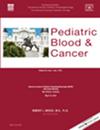A Retrospective Cohort Analysis of Children and Adolescents With Lymphoblastic Lymphoma in Latin America
Abstract
Background
Information about pediatric lymphoblastic lymphoma (LLy) in low- and middle-income countries is scarce. Thus, here we describe the clinical characteristics, treatment, and outcome of a large cohort of children and adolescents with LLy in Latin America.
Methods
A retrospective analysis was conducted of pediatric patients with LLy treated at 10 institutions (2007–2017) that are members of the St. Jude Global Alliance.
Results
A total of 126 patients were included: 60 (47.6%) had T-cell LLy, 49 (38.9%) had precursor B-cell LLy, and 17 (13.5%) had LLy with an unknown immunophenotype. Ninety-seven (77%) presented with stage III/IV disease, and 42 (33.3%) had complications at diagnosis. In 30 (23.8%) cases, the pathology diagnosis was received more than 15 days after the biopsy, and in 23 (18.2%) cases, a pathology review at another institution was required. The 5-year event-free survival and overall survival were 73% and 78%, respectively. Abandonment-sensitive event-free survival and overall survival were 65% and 70%, respectively. Events included disease relapse/progression (n = 22), refractory disease (n = 1), treatment abandonment (n = 11), death during induction (n = 4), death during complete remission (n = 4), and second malignancy (n = 1).
Conclusions
Diagnosis of pediatric LLy in Latin America was challenging; however, the proportions of T-cell and precursor B-cell immunophenotypes were balanced. Most patients presented with high-risk disease, and many had critical conditions, leading to a relatively high toxic death rate. Improvements in diagnosis, supportive measures, and follow-up are imperative to decrease treatment abandonment and improve the outcomes of pediatric patients with LLy in Latin America.

 求助内容:
求助内容: 应助结果提醒方式:
应助结果提醒方式:


